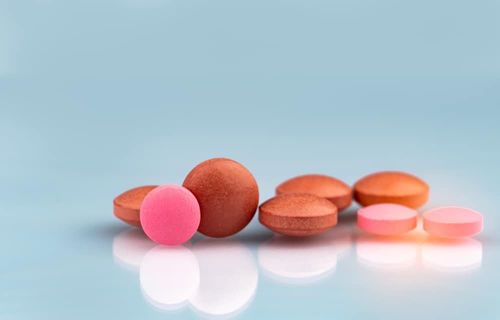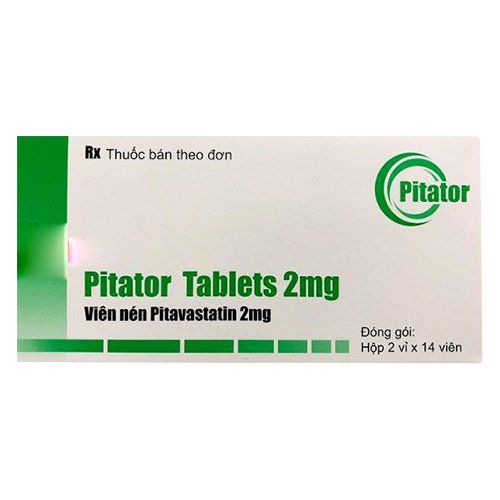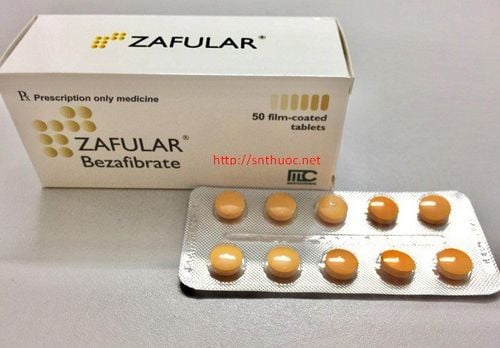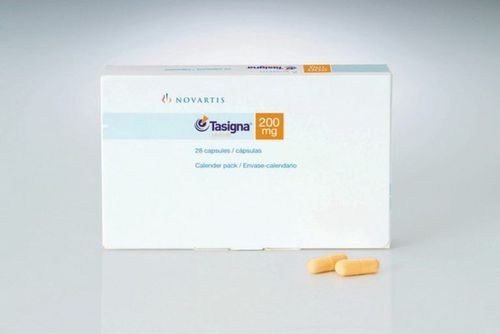This is an automatically translated article.
Statins are a group of drugs that control blood lipids very commonly used with many different active ingredients. One of them is Pravastatin with the brand name Stavacor 10mg. So what is Stavacor and how is it used?
1. What is Stavacor 10mg?
Stavacor contains the active ingredient Pravastatin, which is used to treat primary hypercholesterolemia, hyperlipidemia and to support the treatment of myocardial infarction or angina pectoris. Stavacor 10mg in capsule form, taken once a day, preferably in the evening, after meals or on an empty stomach.2. Uses of Stavacor 10mg
Stavacor is indicated in the following cases:
Primary hypercholesterolemia or mixed dyslipidemia: Stavacor is used as an adjunct to diet, when blood lipid targets are not controlled. with diet and other non-pharmacological treatments (eg exercise, weight loss...); Primary prevention: Stavacor is indicated as an adjunct to diet to reduce the risk of morbidity and mortality from cardiovascular events in patients with hypercholesterolemia (moderate or severe) and at high risk for heart disease. circuit; Secondary prevention: Stavacor is indicated as an adjunct to the correction of risk factors in patients with a history of myocardial infarction or unstable angina with normal or elevated blood cholesterol levels to reduce the risk of death. Heart; Post-transplant: Stavacor helps reduce blood lipids in patients receiving immunosuppressive drugs for organ transplantation.
3. Instructions for using Stavacor 10mg
Before starting treatment with Stavacor, patients should be diagnosed to rule out secondary causes of hyperlipidemia, and develop and maintain a standard, low-cholesterol diet throughout treatment. .
Specific Stavacor drug dosage:
Hypercholesterolemia: 10-40 mg/time/day (1 to 4 Stavacor 10mg tablets). Response to treatment can be seen after 1 week and usually reaches a maximum after 4 weeks of taking the drug, so it is necessary to check blood lipids periodically and adjust the dose accordingly; Prevention of cardiovascular disease: 40mg/day (4 Stavacor 10mg tablets); Post-organ transplantation: The starting dose of Stavacor is 20 mg/day if the patient is taking concomitant immunosuppressive drugs. Depending on the response to treatment, the dose of Stavacor can be increased to 40mg/day. Stavacor dose in some special subjects:
Children and adolescents (8-18 years old): 10-20 mg / time / day in children 8-13 years old, 10-40 mg / time / day for children 14-18 years old; Elderly: No dose adjustment of Stavacor is necessary unless there is a risk of dangerous side effects; Patients with hepatic or renal impairment: The initial dose of Stavacor is 10 mg/day in patients with moderate to severe renal impairment or significant hepatic impairment, then the dose is adjusted according to the lipid response under the supervision of a physician. . Combination therapy of Stavacor with other drugs:
Stavacor in combination with bile acid-binding resins (such as cholestyramine, colestipol) increases the effectiveness of total and LDL cholesterol control. Note Stavacor should be taken 1 hour before or 4 hours after the time of using the bile acid resin; Patients receiving Stavacor concomitantly with Cyclosporin, with or without other immunosuppressive agents: The starting dose is 20 mg once daily and cautiously increased to 40 mg.
4. Contraindications of Stavacor 10mg
Contraindicated to use Stavacor 10mg in the following cases:
Allergy to Pravastatin or any ingredient of Stavacor drug; Active liver disease, including unexplained elevations of liver enzymes (greater than 3 times the upper limit of normal); Patient is pregnant or lactating.
5. Some notes when using Stavacor 10mg
Pravastatin has not been evaluated for use in patients with homozygous hereditary hypercholesterolemia, and Stavacor is not suitable for the treatment of patients with hypercholesterolemia due to high HDL-cholesterol.Hepatic dysfunction: As with other lipid-lowering agents, Stavacor can moderately increase liver transaminase levels and in most cases return to normal without discontinuation. However, it should be noted that if a patient is taking Stavacor and increases in transaminases (ALT and AST) more than 3 times the upper limit, treatment should be discontinued. Stavacor should be used with caution in patients with a history of liver disease or severe alcohol abuse.
Muscle disorders:
Like other HMG-CoA reductase inhibitors (also known as statins), Stavacor can lead to myalgia, myopathy and rhabdomyolysis (rarely). Therefore, myopathy should be considered in any patient on statin therapy who presents with unexplained muscle symptoms such as pain, weakness, or cramps; In these cases, quantitative testing of creatine kinase (CK) blood levels is required. Treatment with statins such as Stavacor should be interrupted when CK levels increase more than 5 times or when symptoms related to muscle function are severe; In very rare cases, rhabdomyolysis may occur, with or without secondary renal failure. Rhabdomyolysis is an acute, potentially fatal condition that can occur at any time during treatment and is characterized by massive muscle destruction associated with elevated CK levels. usually above 30 or 40 normal values), leading to myoglobinuria; Although statins are not contraindicated in patients with muscle problems. However, this is a factor that can increase the risk of myotoxicity, so a careful benefit/risk assessment and special monitoring is required during statin use such as Stavacor ; The risk and severity of myopathy during statin therapy is increased with concomitant administration of potentially interacting drugs. Quantitative testing of CK (creatine kinase) during Stavacor administration:
Routine monitoring of creatine kinase or other muscle enzymes is not recommended in patients on statin therapy and without special symptoms; However, this test is recommended prior to initiating statin therapy in cases with specific risk factors or in patients who develop muscular symptoms during statin therapy; If the CK concentration is significantly increased from baseline, the test should be repeated after 5-7 days to confirm the results; Before initiating treatment with Stavacor: Caution should be exercised when Stavacor is used in patients with risk factors such as renal impairment, hypothyroidism, history of myotoxicity with statins or fibrates, personal or family history. family history of inherited muscle disorders, alcohol abuse, or are over 70 years of age. Quantitative CK testing should then be performed prior to initiation of treatment. If CK levels are above 5 times the normal value, treatment with Stavacor should not be initiated and should be re-measured after 5-7 days; During treatment: Patients taking Stavacor should be instructed about unexplained muscle pain, weakness or cramps to notify their doctor promptly. CK testing should be performed in these cases; if markedly elevated, consider discontinuation of the drug. Discontinuation of Stavacor should also be considered if muscle symptoms are severe and may cause daily discomfort, even when CK levels remain below 5 times normal. If muscle symptoms disappear and CK levels return to normal, the patient may be considered reintroducing the statin at the lowest dose and closely monitored. Interstitial lung disease: Special cases of interstitial lung disease have been reported with some statins, including Stavacor, particularly during long-term therapy. Manifestations of interstitial lung disease include shortness of breath, dry cough, and general deterioration. If this is present, statin therapy should be discontinued.
Diabetes: There is some evidence that Stavacor increases blood glucose in some patients, at high risk of developing diabetes in the future. However, statins such as Stavacor reduce cardiovascular risk, so this is not a reason to stop treatment. Patients at risk (when fasting blood sugar 5.6 to 6.9 mmol/L, BMI over 30 kg/m2, elevated triglycerides, increased blood pressure) should be monitored and biochemical tests according to guidelines. Use Stavacor for pregnant or lactating patients: Do not use for this subject. Using Stavacor drug for drivers and operating machines: There are no specific reports on the effects of Stavacor on this subject. However, to ensure patient safety, consult your doctor or pharmacist before use.
6. Side effects of Stavacor 10mg
During the use of Stavacor 10mg, patients may experience some of the following side effects:
Dizziness, headache; Sleep disorders, insomnia; Visual disturbances (double vision, blurred vision); Eating indigestion, heartburn, abdominal pain, nausea, vomiting; Constipation, diarrhea, flatulence; Itching, skin rash, urticaria; Hair loss; Difficulty urinating, nocturia; Sexual dysfunction; Arthralgia, muscle spasticity, myalgia, muscle weakness, increased plasma creatinine kinase concentration; Increase liver enzymes ; Peripheral polyneuropathy; Hypersensitivity reactions (including anaphylaxis, lupus erythematosus syndrome, allergic reactions); Pancreatitis; Jaundice, hepatitis, hepatocellular necrosis; Rhabdomyolysis, possibly associated with secondary acute renal failure and myoglobinuria.
7. Interactions of Stavacor 10mg
When Stavacor is combined with some other drugs or with food or drink, some reactions may occur. Therefore, patients should consult a doctor to limit unwanted interactions during use. Stavacor contains the active ingredient Pravastatin, which is used to treat primary hypercholesterolemia, hyperlipidemia and to support the treatment of myocardial infarction or angina. To ensure the effectiveness of treatment and avoid unwanted side effects, patients need to strictly follow the instructions of the doctor, professional pharmacist.
Follow Vinmec International General Hospital website to get more health, nutrition and beauty information to protect the health of yourself and your loved ones in your family.
Please dial HOTLINE for more information or register for an appointment HERE. Download MyVinmec app to make appointments faster and to manage your bookings easily.













